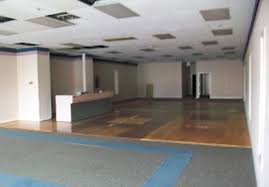 This article is important to you because someday you may really-really need a portfolio commercial lender willing to make a non-recourse commercial loan.
This article is important to you because someday you may really-really need a portfolio commercial lender willing to make a non-recourse commercial loan.
Finding a non-recourse commercial real estate loan is far more legally sophisticated than merely finding a commercial lender "foolish enough" to make a commercial loan to a borrower who wants to reserve the right to simply walk away from his obligation. Sometimes there are important legal reasons why a commercial loan simply must be a non-recourse loan. We'll discuss some of these important legal reasons further below.
First of all, however, what is a non-recourse commercial loan? A non-recourse commercial real estate loan is a loan that is NOT personally guaranteed by the borrower. If the real estate investment goes bad, the borrower can usually simply walk away from the property.
There are around seven to ten common exceptions, known as carve-outs, to this basic rule. If the borrower commits certain Bad Boy Acts - fraud, intentional waste (taking a sledgehammer to the walls), toxic contamination, placing a second mortgage on the property without permission, failure to maintain fire insurance on the property, failure to pay the real estate taxes, misappropriation of a condemnation award or any fire insurance proceeds, or certain criminal acts by the borrower - then many non-recourse commercial loans becomes a full-recourse loans. The borrower becomes personally liable.
However, absent the commission of some Bad Boy Act by the borrower, a commercial lender cannot come back after the borrower for a deficiency suffered as a result of making a non-recourse commercial real estate loan. A deficiency is a loan loss left over after the property is sold in foreclosure.
Obviously commercial lenders are not crazy about the idea of making non-recourse commercial loans. In fact, since the Great Recession the vast majority of all commercial banks making portfolio commercial loans today absolutely insist on a personal guarantee by the borrower.
A portfolio commercial loan is a commercial loan that the lender intends to keep in its own portfolio, as opposed to a commercial loan that the lender intends to later sell off in the secondary market. CMBS lenders and ABS lenders (subprime commercial lenders who sell their scratch-and-dent commercial loans to Wall Street pools) are examples of commercial lenders who are not portfolio lenders.
Bottom line: Since the vast majortiy of all commercial loans made today are made by commercial banks and credit unions, non-recourse commercial lenders are fairly rare. If you happen to meet a commercial lender - like Blackburne & Sons - who is willing to make a non-recourse commercial loan, be sure to make a note of it.
Okay, so when is it legally necessary for a commercial loan to be non-recourse?
- Let's suppose you own a commercial property in your IRA. You may not legally personally guarantee your commercial loan from the bank without running afoul of the IRS. Personally guaranteeing your IRA's commercial loan, in the opinion of the IRS, lowers the interest rate to your IRA and is a form of disallowed contribution. (Code Section 4975(c)(1)(B))
- Commercial loans to Tenant-in-Common (TIC) investments must be non-recourse; otherwise the investments lose their tax-deferred qualification.
- Certain irrevocable trusts have a trustee who is separate from the beneficiary, such as a family attorney serving as the trustee for the minor child of a deceased client. If a balloon payment comes due on a commercial property owned by the irrevocable trust, the trustee certainly isn't going to be willing to guarantee some $800,000 new commercial loan.
But here's a secret. Shush. If you happen to have a commercial loan that is waaaaay too good for Blackburne & Sons, and all it takes for us to land the deal is to be flexible about the personal guarantee, then ... shush ... we'll do it.







 I have been in the commercial loan business for over 34 years now, but I still learn more about commercial real estate finance ("CREF") almost every day. This week I learned a new commercial loan term:
I have been in the commercial loan business for over 34 years now, but I still learn more about commercial real estate finance ("CREF") almost every day. This week I learned a new commercial loan term:

 Yesterday I received an email advertisement from a commercial loan company offering
Yesterday I received an email advertisement from a commercial loan company offering 
 This article will teach commercial loan brokers where to go to find lots of commercial real estate loans. It will also teach commercial real estate brokers (sales brokers) about some great new commercial real estate finance tools - really cool stuff - that will make it easier for them for them to sell or buy commercial real estate.
This article will teach commercial loan brokers where to go to find lots of commercial real estate loans. It will also teach commercial real estate brokers (sales brokers) about some great new commercial real estate finance tools - really cool stuff - that will make it easier for them for them to sell or buy commercial real estate.

 Our commercial hard money mortgage company,
Our commercial hard money mortgage company, 
 Finding a lender for a commercial loan secured only by land is pretty hard these days. Many commercial lenders are still sitting on huge portfolios of land upon which they foreclosed during the Great Recession.
Finding a lender for a commercial loan secured only by land is pretty hard these days. Many commercial lenders are still sitting on huge portfolios of land upon which they foreclosed during the Great Recession.


 The new Dodd-Frank Regulations have driven a ton of former residential loan agents into the commercial loan business. I have never seen so many guys chasing commercial loan leads. In a market flooded with commercial loan agents, the wise commercial mortgage broker will adjust his marketing strategy. Commercial loan brokers need to market for commercial loans more directly, rather than just marketing to residential loan agents.
The new Dodd-Frank Regulations have driven a ton of former residential loan agents into the commercial loan business. I have never seen so many guys chasing commercial loan leads. In a market flooded with commercial loan agents, the wise commercial mortgage broker will adjust his marketing strategy. Commercial loan brokers need to market for commercial loans more directly, rather than just marketing to residential loan agents.
 In my opinion, purchase money commercial loans are much safer for a commercial lender than refinances. The reason this is important to you is because soon wealthy real estate investors will be returning to the commercial-investment market, and you will be working on a ton of
In my opinion, purchase money commercial loans are much safer for a commercial lender than refinances. The reason this is important to you is because soon wealthy real estate investors will be returning to the commercial-investment market, and you will be working on a ton of 






